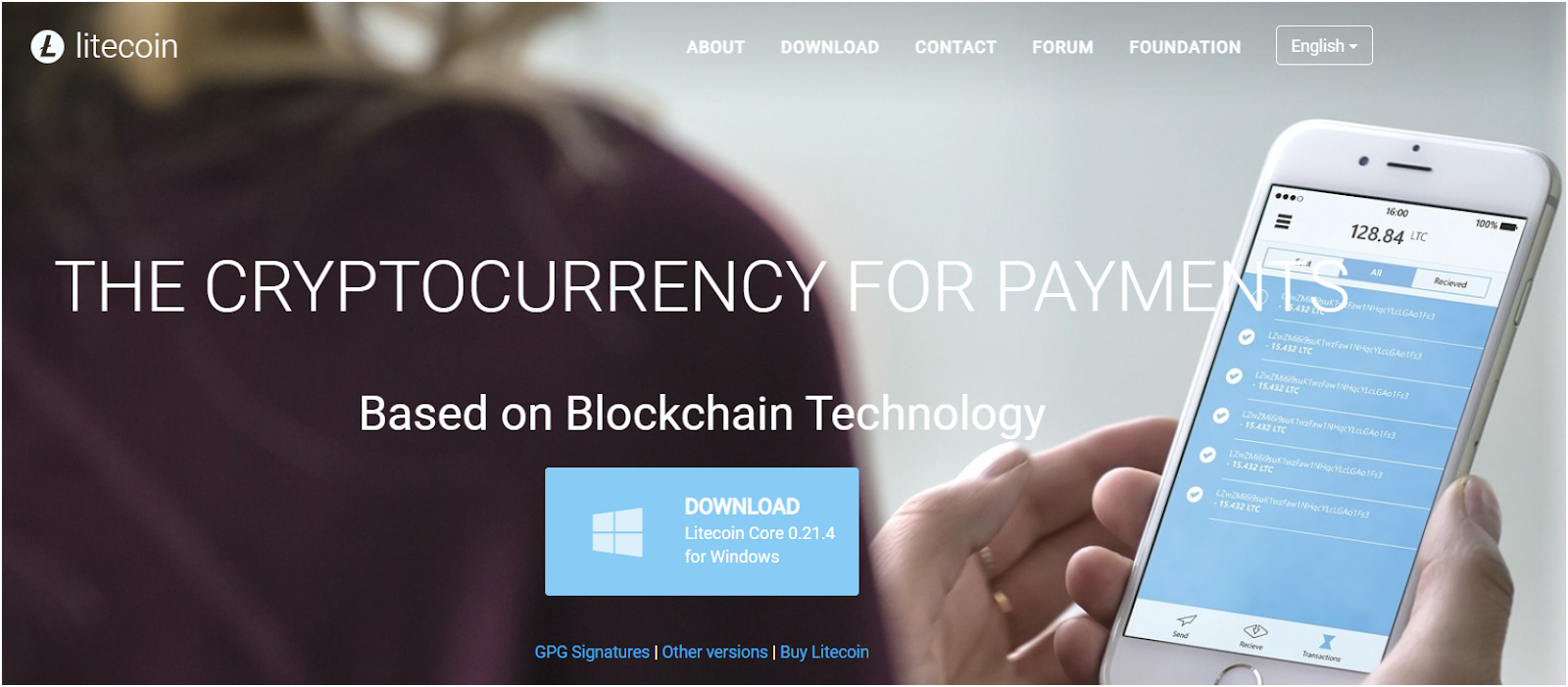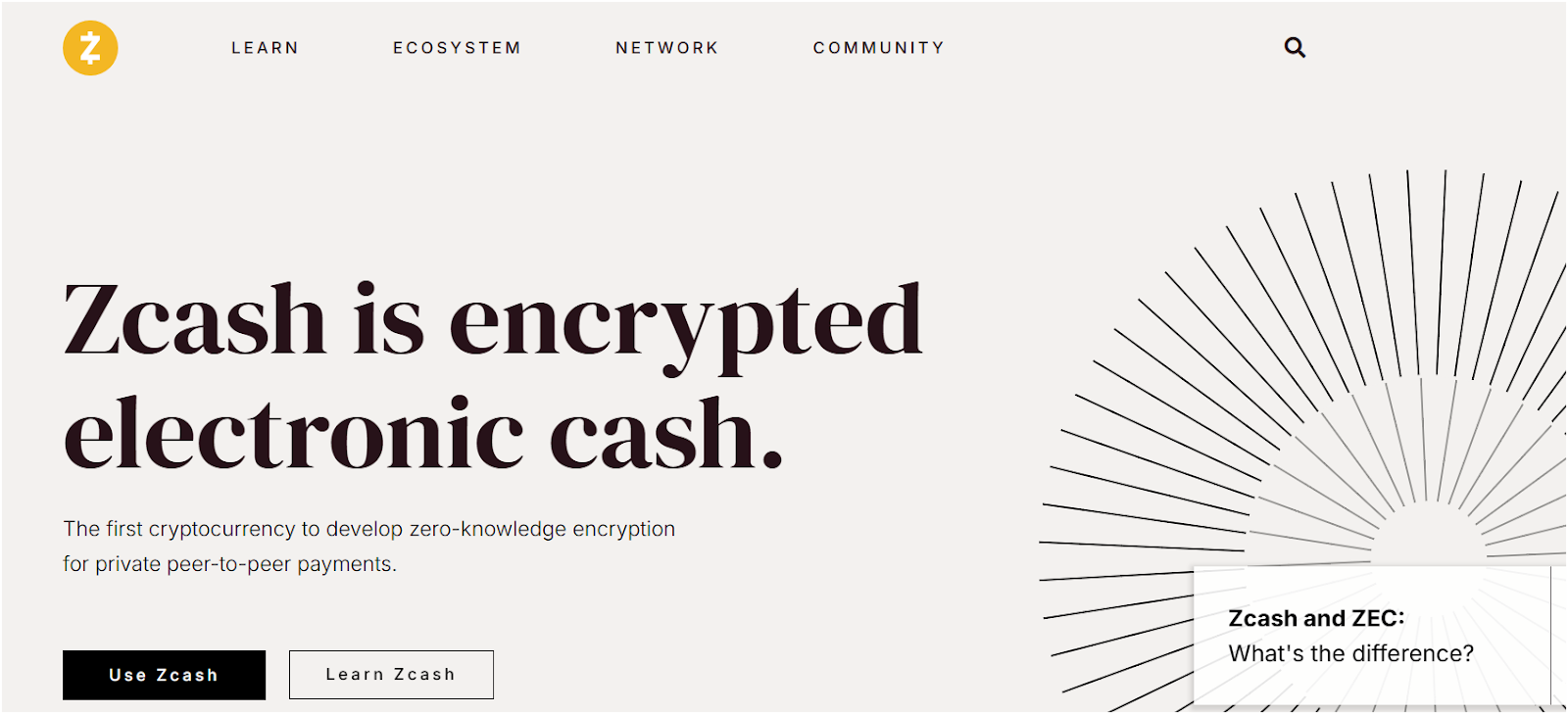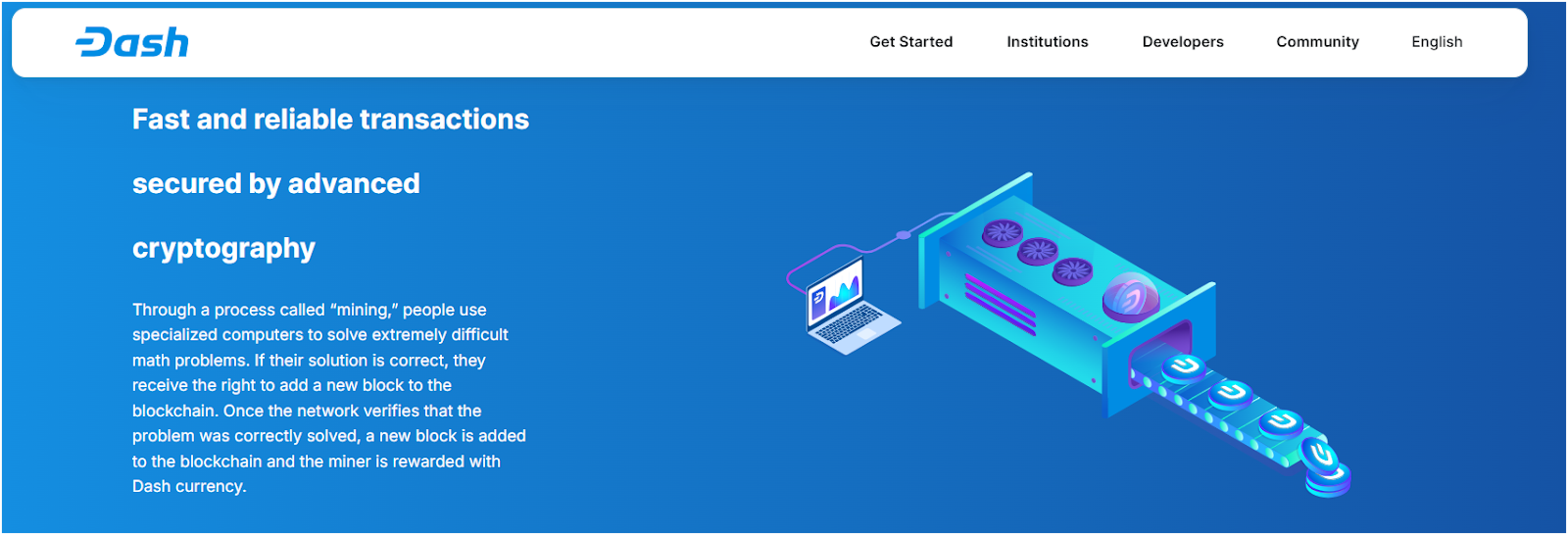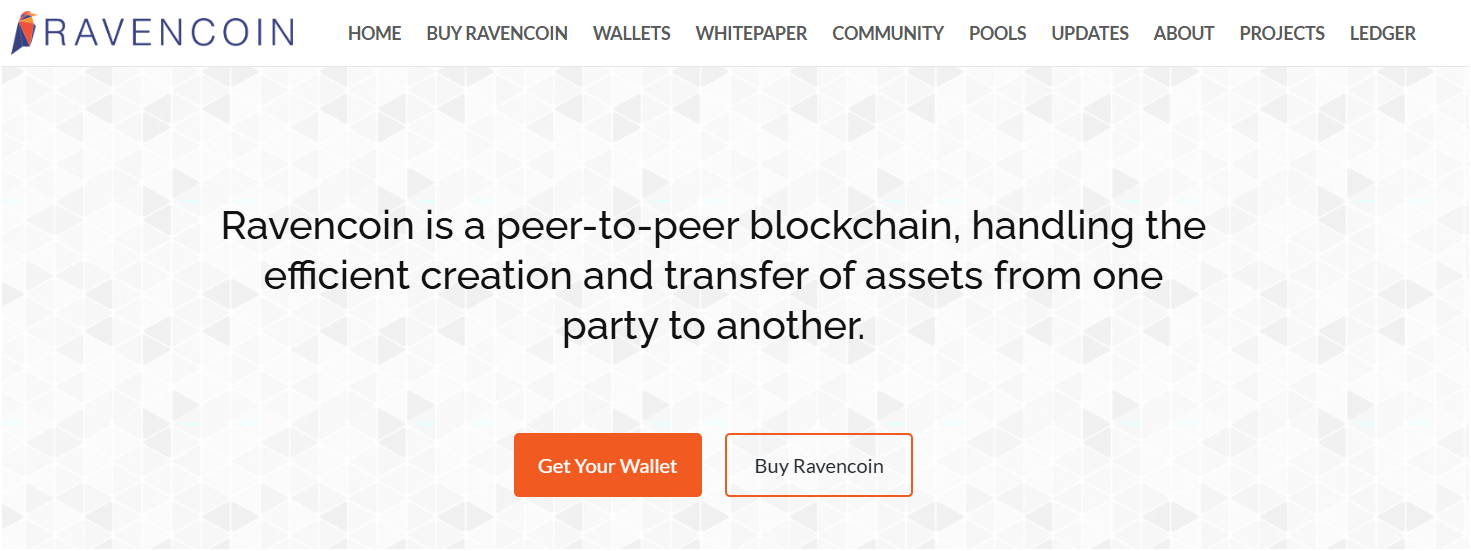What is Sign Protocol? The First Binance Alpha Airdrop Project
Unichain Yield Farming Guide: Optimize with Over 100% APR
WEEX Review 2025: Is This Crypto Exchange Worth It?
Fungible vs Non-Fungible Tokens: Key Differences Explained
3Commas Review 2025: Pros & Cons, Features, Pricing, and More
How to participate IDO on Binance Wallet
Day Trading Crypto: A Beginner’s Guide
How to Buy Altcoins: A Complete Guide for Beginners
Top 5 Airdrop Farming Projects on Solana (Part 2)
Farming Airdrops on Binance Alpha: Low Risk, High Reward
Is Binance Safe? Binance Exchange Security Measures Tested
Is MetaMask Safe and Legit? Security Measures Analysis
6 Best Crypto Exchanges in Singapore For 2025
Phemex Review 2025: Is it a Safe & Legit Crypto Exchange?
What Is GameFi and How Does It Work?
What is Ondo Finance? Future of RWAs and DeFi
What is Gem Wallet: Best Multi-Chain Solution for DeFi Users
What are Utility NFTs? Best NFT Utility Examples
Rabby vs MetaMask: Which is a Better Crypto Wallet?
What Is DeSci? The Ultimate Guide to Decentralized Science
What Are Pudgy Penguins (PENGU)? The Ultimate Collector’s Guide
What Is Trust Wallet? A 2025 Comprehensive Guide
What is DeFi (Decentralized finance) and How Does it Work?
What is DeFi NFT? The Ultimate Guide
Grass Could Be the Next Project Listed on Binance?
ADA Price Prediction: Can It Break the $1 Mark Next Month?
Zora Airdrop Scandal: From “For Fun” to Loss of Trust
Gold vs. Bitcoin: Two Pillars of Value Preservation, But Which Is Better?
Hyperliquid Deep Dive: Understand HYPE and HLP Model
XRP Deep Dive: A Masssive Player in Today’s Crypto Market
Study: 88% of Businesses Reported Higher Revenue after Accepting Crypto Payment
Survey: Nearly 80% of FTX Creditors Will Reinvest in Crypto with Their Repayment
XDC Deep Dive
Survey: 1 in 7 Americans Has Bought TRUMP Memecoin
Robonomics (XRT) Deep Dive
2025 Crypto Ownership Report: 70% of American Adults Own Cryptocurrency
By Amit Chahar
Key Takeaways
Crypto mining is the process of using powerful computers to verify blockchain transactions and generate new cryptocurrency as a reward.
The best cryptocurrencies to mine now in 2025 include Bitcoin, Monero, Litecoin, Zcash, Dash, Ravencoin, and Ethereum Classic due to their low electricity costs, mining difficulty, and high profitability.
Choosing the best crypto to mine depends on factors like hardware, electricity costs, mining difficulty, and block rewards.
Crypto mining has become one of the most popular ways to earn digital currency without buying it directly. As a miner, you help verify blockchain transactions, keeping the network secure and earning cryptocurrency rewards in return. With so many coins available, choosing the best crypto to mine can seem overwhelming, especially with varying costs, mining difficulty, and profitability.
In this guide, we’ll explore 7 top cryptocurrencies for mining in 2025 and provide tips on selecting the best option based on your hardware, electricity costs, and mining goals.
Bitcoin is probably the first cryptocurrency people think of for a mining operation because it’s the original crypto coin, created in 2009. Mining Bitcoin means using powerful computers to solve tough math problems. Each successful solution adds a “block” of transactions to the blockchain, and the miner receives a reward in BTC.
Right now, miners get 3.125 BTC for each block they successfully solve, though this amount halves every four years (called “halving”). This will keep happening until all 21 million BTC are mined, projected around 2140.
To mine Bitcoin, specialized hardware called ASICs (Application-Specific Integrated Circuits) is necessary. Regular computers or graphics cards just can’t keep up, as they produce way fewer hashes per second than ASICs. For example, top ASICs can handle trillions of hashes per second (TH/s), while GPUs only manage a fraction of that.
Mining BTC has become so competitive that many people join mining pools, which are groups that combine computing power for better chances. Pool members share rewards based on the work they contributed. While solo mining is possible, it’s rare to succeed alone due to the high difficulty level, which automatically adjusts every two weeks to keep the block-solving time close to 10 minutes.
You can read our in-depth guide on how to mine Bitcoin.
Monero coin mining is one of the most beginner-friendly ways to start with crypto mining. Unlike other cryptos like Bitcoin, which need specialized hardware (ASICs), Monero uses an algorithm called RandomX. This algorithm is designed to make mining with regular CPUs very effective.
So, anyone with a decent computer – like a gaming PC with an AMD Ryzen or Intel i9 processor – can start mining XMR from home. CPUs like AMD’s Ryzen 9 5950X or Intel’s i9-10900K are known for high hash rates, which is basically how fast they can solve the math puzzles needed to earn Monero rewards.
To mine Monero, you’ll need mining software, and XMRig is one of the most popular choices. It’s compatible with CPUs and GPUs. A typical block reward for Monero miners is about 0.6 XMR every two minutes.
Monero’s “tail emission” model keeps this reward going indefinitely, which encourages cryptocurrency miners to stay active long-term. This reward model, plus Monero’s strong privacy features, makes it a popular choice for smaller, privacy-focused miners. Mining Monero is energy-efficient, especially compared to Bitcoin, making it a good option if you want to try mining without huge upfront costs.
Like Bitcoin but faster, Litecoin (LTC) is another best crypto to mine for beginners since it’s a well-known and reliable cryptocurrency. Litecoin was created in 2011 and is designed to process transactions quicker, with block times around 2.5 minutes compared to Bitcoin’s 10 minutes.
It works on a proof-of-work (PoW) system using an algorithm called “Scrypt”, which makes it a bit different from Bitcoin’s mining. This algorithm needs less energy and memory, so mining Litecoin is less intense than Bitcoin mining, but you still need solid hardware.
To mine Litecoin, you typically need an ASIC miner, which is special equipment made for crypto mining. Mining solo, however, isn’t practical for most miners since Litecoin’s mining difficulty has increased. Instead, joining a mining pool like LitecoinPool or F2Pool is common. For a complete setup, you’ll also need Litecoin crypto mining software (like CGMiner or EasyMiner), a wallet to store your mined LTC, and a stable internet connection.
Zcash (ZEC) is another best cryptocurrency to mine because it’s known for strong privacy and relatively accessible mining options. It uses a special algorithm called Equihash, which works well with GPUs, making it possible for home miners with decent graphics cards to participate.
Its mining performs best with Nvidia cards, like the GTX 1070 or RTX 3070. ASICs can also be used, but Zcash originally designed Equihash to be GPU-friendly to keep mining decentralized. That said, ASIC miners are still more efficient but cost a lot more to set up.
For software, options like EWBF, Gminer and NiceHash are popular among Zcash miners, especially for Nvidia GPUs, as they’re optimized for Equihash. A block reward for Zcash miners is around 3.125 ZEC.
Dash is mined using a unique method called the X11 algorithm, which combines 11 different hashing functions. This algorithm was created specifically for Dash, making it both efficient and secure.
Compared to Bitcoin, Dash mining is less power-hungry and can offer more stable profits because of its unique block reward reduction model. Instead of cutting rewards in half every four years, Dash reduces its block rewards by about 7% yearly. This slower reduction rate makes mining a bit more predictable for beginners.
Dash also uses a two-layer system with “masternodes”. These special nodes handle important network features, like InstantSend (for fast transactions) and PrivateSend (for extra privacy). Masternodes get rewards too, splitting earnings with miners, making the Dash network more secure and decentralized. On average, each mined block rewards about 2.48734 DASH.
Ravencoin (RVN) is the best crypto to mine with GPUs, especially if you’re mining on a budget. Unlike Bitcoin, which uses ASIC (special mining hardware), Ravencoin uses a KAWPOW algorithm, making it ASIC-resistant and great for GPUs. Even without high-end, expensive equipment, you can still mine it using a regular GPU.
Mining pools like RavenMiner or F2Pool are common for Ravencoin, allowing you to combine your mining power with others and share rewards more consistently. With a block reward of 2,500 RVN every minute, it’s pretty accessible and rewarding for beginners wanting to earn crypto.
Ethereum Classic (ETC) is the best crypto to mine for beginners because it’s still based on the Proof-of-Work (PoW) system, just like the original Ethereum. It uses a modified version of the Ethash algorithm called Etchash, making it easier for miners who don’t have super expensive hardware.
You can get started with a decent GPU, and 4GB of VRAM is enough due to the smaller DAG size compared to Ethereum’s (now inactive for mining) requirements. Some miners even use ASIC rigs like the Jasminer X4. For a GPU-based setup, look for options with high hash rates and lower power usage.
To improve your chances of earning, you’ll probably want to join a mining pool. Nanopool, Ethermine, and F2Pool are popular choices, usually charging around 1% in fees. You can expect to earn about 0.64 ETC per day per standard GPU rig, although this depends on electricity costs and current ETC value.
Crypto mining is the process of using computers to create new crypto coins, like Bitcoin or Ethereum Classic, and validate transactions on a blockchain network. It’s like solving really hard math puzzles.
Miners use powerful computers to guess a number, called a “hash”, which verifies transactions in a “block”. Once the puzzle is solved, a new block is added to the blockchain, and the cryptocurrency miner gets rewarded.
In the early days, people could mine Bitcoin using normal home computers, but as the demand and difficulty increased, mining got way harder and required more powerful machines.
Today, most successful miners use specially designed hardware and join “mining pools”, where miners work together and share rewards. Mining is super important for keeping blockchains secure and decentralized by checking transactions without needing a central authority, like a bank.
There are three main types of hardware used for cryptocurrency mining, which are CPU, GPU, and ASIC mining.
This method uses your computer’s central processor to mine coins. It was popular at the start of Bitcoin, but now, it’s too slow and unprofitable for major cryptocurrencies due to the high difficulty. Some smaller coins still allow CPU mining, but it’s not a go-to choice for serious miners.
GPU mining uses graphics cards (the same hardware that runs video games) to solve mining puzzles. GPUs can handle a lot more data than CPUs and are good for mining coins like Ethereum Classic or Ravencoin.
GPU mining setups, or “rigs”, have several graphics cards and can be cost-effective and flexible since they can mine various coins depending on profitability.
ASICs (Application-Specific Integrated Circuits) are custom-built devices for mining specific coins, like Bitcoin or Litecoin. ASICs are super fast and efficient, but they’re expensive and only work for certain coins.
Plus, new ASIC models keep coming out, so old models can quickly lose profitability. However, for high-demand coins, ASIC mining can still be the most powerful option.
Crypto mining software is the tool that allows your hardware to perform the calculations needed to mine cryptocurrencies. It essentially connects your hardware to the blockchain network and manages the mining process.
Some of the best Bitcoin and crypto mining software include CGMiner and EasyMiner. They are highly optimized to address the miner needs: connecting to the blockchain, managing hardware, and maximizing profitability.
With cloud mining operations, you don’t need to own any hardware. Instead, you pay a fee to rent someone else’s mining power. The company does the mining, and you get a share of the reward.
It’s easy and doesn’t require maintenance, but it can be risky since some cloud mining services charge high fees or turn out to be scams.
Mining pools are groups of miners who combine their computing power to mine more efficiently. They split the reward based on each person’s contribution. Mining pools are almost a must-have for solo miners because, alone, you have a tiny chance of finding a block. But in a pool, rewards come more often, even if they’re smaller.
Mining crypto profitability depends on factors like equipment, electricity costs, and the coin’s value. Here’s how you can find a good coin to mine.
Profitability calculators, like whattomine.com, can help estimate how much you might earn by mining different coins. Input your hardware and electricity costs, and you’ll get a list of cryptos that are potentially profitable.
Bitcoin is now the most profitable cryptocurrency for mining, due to its strong value and liquidity. Litecoin and Ethereum are also popular and in high demand among miners, increasing their market value.
Every crypto has a specific block reward. For example, Bitcoin currently rewards 3.125 BTC per block, but this reward halves about every four years.
This halving event cuts down mining rewards, making the coin scarcer and, theoretically, more valuable. So, understanding a coin’s reward cycle can help in choosing a long-term profitable coin.
Difficulty is how hard it is to mine a new block. As more miners join the network, the difficulty goes up, meaning it’s harder to earn rewards.
Bitcoin’s difficulty, for example, has increased over the years, making solo mining practically impossible without high-powered ASICs. Mining smaller or newer coins with less difficulty might yield better results for smaller miners.
Mining uses a ton of electricity, and high power costs can eat into profits. Most miners calculate how much energy their hardware uses to see if they’re making enough money to cover costs.
Some areas with cheaper electricity (or green energy options) help miners get a better profit margin. You can read our detailed research report on Electricity Costs to Mine 1 Bitcoin at Home Around the World.
The type of coin you pick often depends on your hardware. ASIC miners are powerful but limited in what they can mine, while GPUs can mine various coins but may be less efficient on high-difficulty networks. So, if you already have hardware, it’s best to find coins suited to what you own.
Even if a coin is profitable to mine, it’s important to check its market value and how easy it is to sell. Coins with low value or low trading volume can be hard to turn into real money.
Bitcoin, Litecoin, and Ethereum Classic are solid choices because they’re widely traded and have high demand.
Coins with strong development teams and active communities are generally more reliable. They’re likely to have regular updates, security fixes, and a stable future, making them safer for miners.
Bitcoin and Ethereum are prime examples with huge communities, but projects like Ravencoin also show good support and growth.
Bitcoin mining is still profitable, but is more challenging and complex than it used to be, especially due to Bitcoin’s halving in April 2024. Halving reduced Bitcoin block rewards from 6.25 to 3.125 BTC per block, making it harder for miners to earn as much as before. As a result, miners need to consider the costs of electricity, hardware, and mining pool fees more carefully.
Mining crypto is easier if you have access to cheap electricity and efficient hardware like ASIC miners, which are necessary to mine Bitcoin and some other major cryptocurrencies. However, these setups are not cheap – ASIC miners can cost $2,000 to $10,000 each, and electricity costs make up about 60-75% of a miner’s expenses. For Bitcoin, it now costs around $45,000 to mine one coin, making it critical for miners to monitor the coin’s price to see if it stays high enough for them to profit (around or above $45,000 for Bitcoin).
Mining cryptocurrency, including Bitcoin, can be profitable. However, the profitability depends on various factors including electricity costs, hardware costs, mining difficulty and market volatility. That’s why you need to plan carefully, use efficient hardware, and manage expenses. For new and small miners, profitability may be limited without access to cheap power or the ability to join a mining pool.
Mining crypto in 2025 is tough, with high costs and intense competition. Bitcoin mining is mainly for those with powerful hardware and access to affordable electricity. For casual or beginner miners, cloud mining or joining a pool can be good options to get started with lower costs.
The future of mining depends a lot on electricity prices, the crypto market, and technology. If you’re considering mining, make sure to have a plan, choose efficient tools, and always calculate costs carefully. Mining is worth it, but only with the right approach and resources.
Yes, in most countries, mining crypto is legal. However, some countries, like China, have banned it due to its high energy use and environmental impact. Always check your country’s laws before starting.
Mining difficulty depends on the coin and the competition. Bitcoin, for instance, has a very high mining difficulty, making it hard without advanced ASIC miners. Coins with lower difficulty, like Ravencoin, can still be mined with GPUs, but they may be less profitable.
Monero (XMR) is one of the most popular cryptocurrencies among home miners. It is well-known for its privacy focus and RandomX algorithm, which is designed to be ASIC-resistant. This makes Monero easy to mine with CPUs, meaning you can simply use a standard home computer instead of expensive specialized hardware.
Mining speed depends on algorithm and hardware, but cryptocurrencies like Ravencoin (RVN) and Dogecoin (DOGE) usually confirm transactions quicker due to their fast block times (around 1 minute) and low mining difficulty.
Cryptocurrency mining is taxed as income in the United States, and whether it’s treated as a hobby or a business affects how much tax is owed. If you mine casually as a hobby, you report your mining income on Form 1040, but you can’t deduct any expenses, such as electricity or equipment costs.
On the other hand, if mining is a business, you can deduct various expenses – like electricity, equipment, and maintenance costs – to reduce taxable income. Business miners also owe a 15.3% self-employment tax on their income in addition to regular income tax rates.
Amit Chahar
With a background in Computer Science, Amit Chahar is a passionate crypto writer, specializing in Crypto and Blockchain Technology. With over 5 years of experience in the crypto and Web3 space, Amit has authored more than 1,000 articles, making him a prolific and knowledgeable writer in the field. His dedication extends beyond writing, as he is also the founder of two crypto websites: walletreviewer.com and reviewexchanges.com. Beyond crypto trading and investing, he is also a stock investor and enjoy playing cricket in his free time.
Disclaimer
NFTevening is an award-nominated media outlet that covers NFTs and the cryptocurrency industry. Opinions expressed on NFTevening are not investment advice. Before making any high-risk investments in cryptocurrency or digital assets, investors should conduct thorough research. Please be aware that any transfers and transactions are done at your own risk, and any losses incurred are entirely your responsibility. NFTevening does not endorse the purchase or sale of any cryptocurrencies or digital assets and is not an investment advisor. Additionally, please note that NFTevening participates in affiliate marketing.
Cryptocurrency
Guides
Exchanges
Analysis
Crypto Basics
Learn
Data
Exchanges
Analysis
Guides
News
Exchanges
Please be aware that our Privacy Policy, Terms of Use, and Disclaimers & Ethics notice have been updated.
NFTevening is a renowned and award-nominated media platform dedicated to reporting on the cryptocurrency industry. Its journalists adhere to a rigorous set of editorial standards, guided by principles designed to uphold integrity, ensure editorial independence, and maintain unbiased reporting across all its publications.
The latest news, articles, and resources, sent to your inbox weekly.
7 Best Crypto to Mine in April 2025 – NFT Evening





